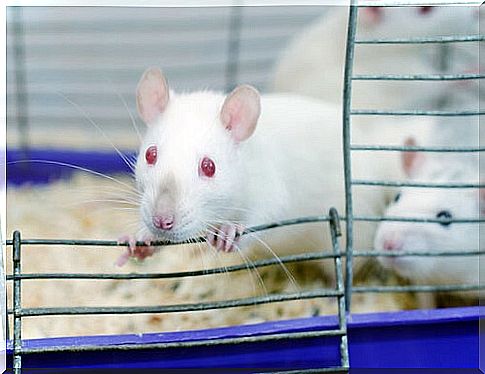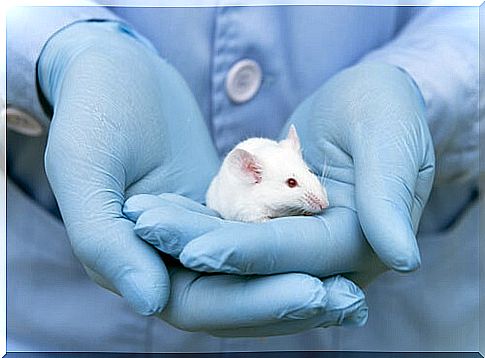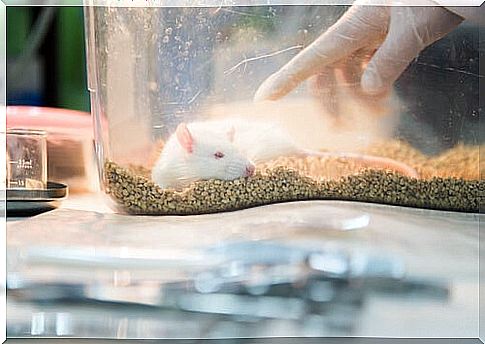The Surprising Experiment In The Rat Park

The rat park experiment is one of the most suggestive on the subject of addictions. Let’s say first that rats have been animals frequently used for “psychological experiments.” This is due to the enormous genetic similarity they have with humans. 95% of the genome of mice and humans is the same.
However, the use of rats for research is always done under controlled conditions. That is, in laboratories. Most of the animals subjected to experiments remain isolated in cages, with hardly any contact with the outside. This is, of course, an unnatural condition for animals of this species.
In the 1960s rats were used to do some studies on addictions. So-called “Skinner boxes” were also used. These are designed with electrical devices that reward, with food, or punish, by means of electric current.
This scheme allowed a study of behavior, at least from the point of view of behavioral psychologists. The rat park experiment was a break with that paradigm. Let’s look at the topic in more detail.

Addicted rats
What behaviorists did in the 1960s was introduce rats to a delivery device through surgery. Then, as was customary, they were isolated in Skinner boxes, that is, in individual cages. They were then taught to press a lever inside the cage. When they did this, they self-administered a substance: psychoactive drugs.
Heroin, one of the most addictive drugs that exists, was used in almost all cases. The point was that every time the rats moved the lever, they immediately received a small dose of drugs. The researchers noticed that some of them, under certain circumstances, or at certain times, repeatedly operated the lever until consuming high amounts of psychoactive.
Some of the rats even went so far as to forget to eat or drink water. What they did not forget was the self-supply of heroin. Therefore, several died during the experiment. The researchers concluded, by analogy, that if people had access to such drugs , they would suffer the same fate as rats.
It was then that Professor Bruce Alexander appeared on the scene, with a group of researchers from Simon Fraser University, Canada. It was they who proposed the rat park experiment.
The rat park experiment
Professor Bruce Alexander thought that the isolation of rats did not allow objective conclusions to be drawn. All the rats used were albino, descendants of Norwegian rats. It is a sociable, curious and intelligent species. Being in a cage was not their natural way of living. Based on that reflection, the idea of doing the rat park experiment was born.
What Alexander wondered is whether the free rats would also act in the same way that the caged rats had. Was there an innate tendency to addiction? When they used drugs the only possible destiny was that they immersed themselves in them until they died?
To answer those questions, Alexander started the rat park experiment in 1977. What his research team did was take two groups of animals. Some would be in the classic laboratory cages, isolated from each other. For the other group, on the other hand, a very wide area was built, 200 times larger than a cage. This space simulated a park with trees and nature.

The interesting results
Because the site was so park-like, the research was dubbed the rat park experiment. To complement this, the researchers brought in other rats from the outside world to interact with the captive ones. The point is that both the rats in the cages and the rats in the park had access to doses of morphine.
The researchers gave the rats the option of drinking two liquids. One of them contained morphine and the other did not. They camouflaged the bitter taste of morphine with a sugar solution. After a few days, the caged rats began to prefer the liquid containing morphine. Those in the rat park drank too, but several days later.
Caged rats consumed 19 times more morphine than free rats. The latter seemed to realize the benefits of not using the drug and were reluctant to do so, even though they had already tried it. Alexander and his team introduced variations, addicted several rats from both groups, but the pattern remained basically the same.
The rat park experiment showed that social isolation was a determining factor for continued drug use. In turn, the company and the freedom of the park significantly reduced the desire to consume. And when this occurred, the affected specimens did everything possible to return to their normal state, even enduring the withdrawal syndrome.









